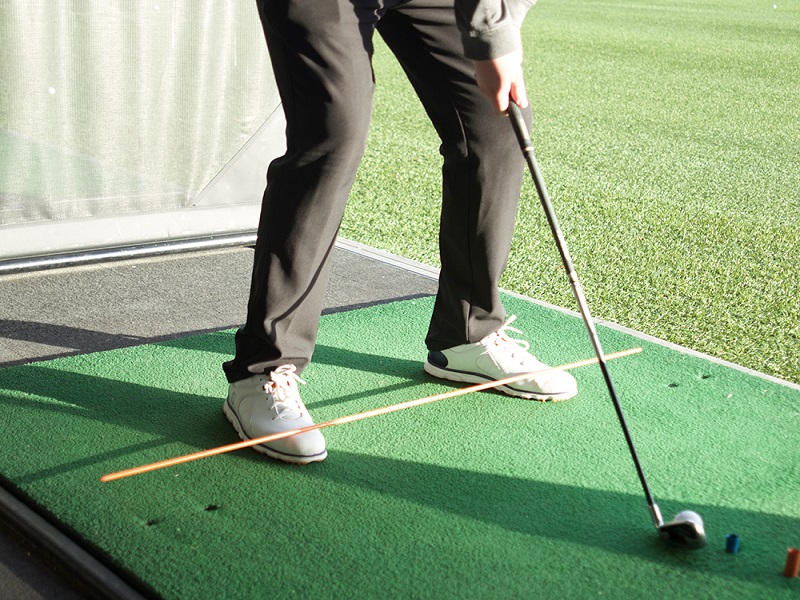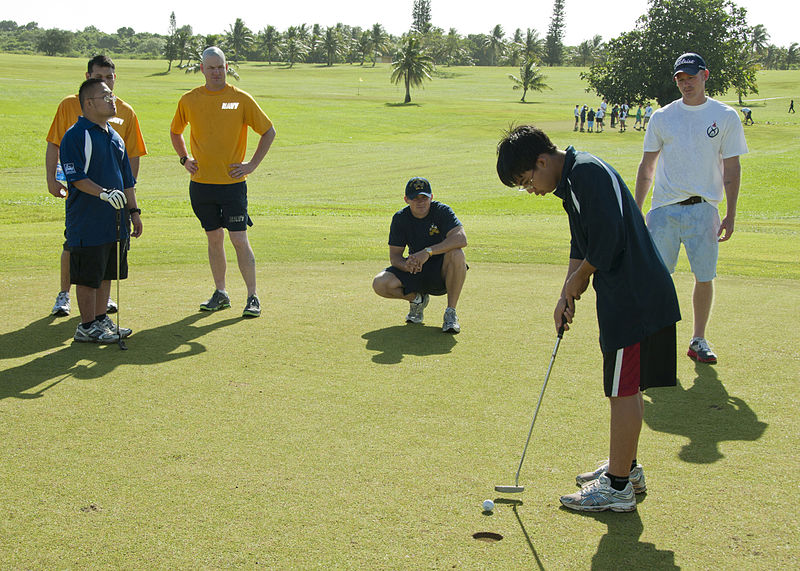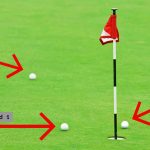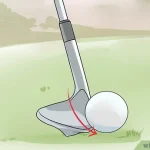As a beginner golfer, one of the most exciting and challenging aspects of the game is learning how to properly hit a golf ball with a driver. The driver is the longest club in your bag, and being able to consistently launch the ball high and far down the fairway is key to scoring well and enjoying your time on the course.
In this comprehensive guide, we’ll cover all the essential tips and techniques you need to know in order to hit powerful, accurate drives as a beginner golfer. Whether you’re struggling to get the ball airborne, or you’re looking to increase your driving distance, this post will provide you with a step-by-step process to improve your driver swing and start hitting the ball like a pro.
We’ll dive into the fundamentals of driver swing mechanics, proper setup and alignment, common beginner mistakes to avoid, and drills you can practice ingraining these skills. By the end, you’ll have a clear roadmap to start bombing those drives down the fairway and taking your game to the next level. Let’s get started!
The Importance of Driving Distance for Beginners
As a new golfer, one of the most common frustrations is the inability to hit the ball as far as you’d like off the tee. It can be incredibly disheartening to watch more experienced players effortlessly blast their drives 250 yards or more, while you’re struggling to get the ball airborne.
However, developing the ability to hit longer, more consistent drives is absolutely crucial for beginner golfers. Here’s why:
1. Shorter Approach Shots:
The farther you can hit your driver, the closer you’ll be to the green on your next shot. This means shorter iron shots, which are generally easier to control and hit accurately. Longer drives set you up for simpler, more manageable approach shots.
2. Fewer Hazards:
When you can drive the ball a good distance, you’re less likely to find your ball in trouble areas like bunkers, water hazards, or thick rough. Staying on the short grass gives you a much better chance of scoring well.
3. More Enjoyment:
Let’s be honest – there’s nothing quite like the satisfying feeling of crushing a drive down the middle of the fairway. Being able to hit the ball a good distance is a key part of what makes golf so fun and rewarding, especially for beginners.
4. Improved Confidence:
As your driving distance improves, you’ll naturally start to feel more confident over the ball. This confidence will translate into better course management, more aggressive play, and lower scores.
So in summary, developing your driver swing and increasing your driving distance should be a top priority as a beginner golfer. The benefits are numerous, and it’s a crucial step in taking your game to the next level. Let’s dive into the specifics of how to make it happen.
Mastering the Fundamentals of the Driver Swing
The golf swing, especially with a driver, is a complex motion that takes time and practice to perfect. However, there are some key fundamentals that every beginner should focus on in order to lay the groundwork for a powerful, consistent driver swing.
-
Grip
Your grip is the foundation of your swing, so it’s important to get it right. Here are the steps for a proper driver grip:
- Place the club in your trail hand (right hand for right-handed golfers) first, with the clubface resting on the lifeline of your palm.
- Extend your fingers around the grip, with your thumb pointing down the shaft.
- Bring your lead hand (left hand) into position, overlapping or interlocking your fingers with your trail hand.
- Make sure your grip pressure is light and relaxed, not too tight.
- Your thumbs should be slightly to the right of center on the grip.
This grip position will help you maintain control of the clubhead throughout the swing and generate maximum power.

-
Stance and Posture
Your stance and body position are crucial for hitting solid, consistent drives. Here’s how to set up properly:
- Stand with your feet shoulder-width apart, knees slightly bent.
- Bend forward slightly from the hips, keeping your back straight and your head still.
- Shift your weight slightly to your lead foot (left foot for right-handers).
- Keep your arms relaxed and hanging naturally from your shoulders.
- Make sure your shoulders are square to your target line.
This athletic, balanced stance will allow you to turn your body freely during the swing and transfer power from the ground up.
-
Swing Plane
The swing plane refers to the imaginary angle or path that your club travels during the swing. For the driver, you want to swing on a slightly upward, ascending plane. Here’s how to achieve this:
- Set the ball position slightly forward in your stance, just inside your lead foot.
- Take the club back with a shallow, inside-out swing path.
- As you reach the top of your backswing, make sure your club is pointing slightly to the right of your target (for right-handers).
- On the downswing, focus on swinging the club straight back down the target line, making contact with the ball at an upward angle.
This swing plane will help you launch the ball high with a powerful, penetrating ball flight.
-
Weight Shift and Hip Rotation
Proper weight shift and hip rotation are essential for generating clubhead speed and distance with the driver. Here’s what to focus on:
- On the backswing, shift your weight to your trail foot (right foot for right-handers) and allow your hips to turn away from the target.
- At the top of your backswing, your weight should be fully on your trail foot, with your hips turned about 45 degrees.
- As you start your downswing, shift your weight aggressively to your lead foot, allowing your hips to rapidly unwind and rotate through the ball.
- Make sure to keep your head still and your spine angle intact throughout the swing.
This weight shift and hip rotation will create tremendous lag and clubhead speed, resulting in longer, more consistent drives.
-
Tempo and Rhythm
The final key fundamental for a great driver swing is maintaining proper tempo and rhythm. Here are some tips:
- Avoid rushing your swing – keep a smooth, unhurried tempo throughout.
- Focus on a slow, controlled backswing, followed by a slightly quicker downswing.
- Visualize your swing as a pendulum, with a nice, fluid rhythm.
- Pay attention to your breathing and try to stay relaxed and balanced.
Developing a consistent, rhythmic swing tempo is crucial for hitting powerful, accurate drives time and time again.
Common Beginner Mistakes to Avoid
As you work on mastering the fundamentals of the driver swing, it’s important to be aware of some common mistakes that many beginner golfers make. Avoiding these pitfalls will help you progress much faster.
-
Improper Grip
We covered the proper grip earlier, but many beginners make the mistake of gripping the club too tightly or with their hands in the wrong position. This can lead to a loss of clubhead control and inconsistent ball striking.
-
Incorrect Posture
Standing too upright or hunched over the ball can throw off your balance and make it difficult to rotate your body properly. Maintaining the proper spine angle and athletic posture is key.
-
Swinging Too Hard
It’s natural for beginners to want to swing the driver as hard as possible in an effort to hit the ball farther. However, this often results in a loss of control and accuracy. Focus on a smooth, rhythmic swing rather than pure power.
-
Improper Weight Shift
Failing to shift your weight properly from your trail foot to your lead foot, or rushing this transition, can cause you to lose balance and hit weak, offline shots.
-
Casting the Club
Casting, or releasing the club too early in the downswing, is a common problem that robs you of distance and accuracy. Work on maintaining lag and keeping the club head behind your hands through impact.
-
Hitting Up on the Ball
Many beginners make the mistake of trying to help the ball get airborne by swinging up on it. This can lead to thin, topped, or skied drives. Focus on making solid, descending contact with a slightly upward angle of attack.
By being aware of these common issues and making the necessary adjustments, you’ll be well on your way to hitting powerful, consistent drives off the tee.

Drills and Exercises to Improve Your Driving
Now that we’ve covered the fundamentals and common mistakes, let’s dive into some specific drills and exercises you can use to improve your driver swing and increase your driving distance.
-
Grip Pressure Drill:
This simple drill helps you develop the proper, light grip pressure needed for an efficient driver swing:
- Grip the club with your lead hand only, keeping your trail hand off.
- Gently place your lead hand on the grip, without squeezing tightly.
- Take a few practice swings, focusing on maintaining that light, relaxed grip.
- Gradually add your trail hand, keeping the grip pressure light.
-
One-Arm Driver Swings:
Swinging the driver with just your lead arm helps ingrain the proper swing mechanics and weight shift:
- Set up to the ball with your trail arm tucked against your body.
- Take the club back and swing through, focusing on maintaining your posture and balance.
- Pay attention to the weight shift and hip rotation as you swing.
- Repeat with your trail arm, then try alternating arms.
-
Tee Alignment Drill:
This drill helps you develop a consistent swing path and clubface control:
- Set up 3–4 tees in the ground, spaced a few inches apart and aligned with your target.
- Take your driver and try to swing the club between the tees, making solid contact with the ball.
- Focus on swinging the club straight back and straight through the tees.
- If you hit any of the tees, adjust your swing path accordingly.
-
Impact Position Drill
Developing a proper impact position is crucial for maximizing your driving distance. This drill helps you feel the right sensations:
- Set up to the ball with your driver as normal.
- On the downswing, focus on keeping your head still and allowing your hips to fully clear and rotate through.
- Feel like you’re hitting the ball with a descending, slightly upward angle of attack.
- Observe where the club makes contact with the ball and adjust your swing accordingly.
-
Tempo and Rhythm Drill
As mentioned earlier, maintaining a smooth, rhythmic swing tempo is key. This drill can help you internalize the right feel:
- Start by taking some slow, controlled practice swings, focusing on a pendulum-like rhythm.
- Once you’ve established the proper tempo, hit some shots while keeping that same smooth, unhurried rhythm.
- You can also try counting “1-2-3” in your head during the swing to reinforce the rhythm.
Incorporating these drills into your practice routine will help you groove the fundamentals of the driver swing and start hitting the ball farther and more consistently. Remember, mastering the driver takes time and dedication, but the results are well worth it.
Conclusion
Hitting powerful, accurate drives off the tee is one of the most rewarding and challenging aspects of golf, especially for beginners. By focusing on the key fundamentals – grip, stance, swing plane, weight shift, and tempo – and avoiding common beginner mistakes, you’ll be well on your way to bombing those drives down the fairway.
Remember, consistent practice is the key to improvement. Dedicate time to working on your driver swing, using the drills and exercises we covered. Pay attention to your ball flight, make adjustments as needed, and celebrate your progress along the way.
With patience and dedication, you’ll start seeing significant gains in your driving distance and accuracy. This will not only make the game more enjoyable, but it will also set you up for lower scores and more success on the course. So get out there, put in the work, and enjoy the thrill of crushing those long, straight drives!
Happy Golfing!





